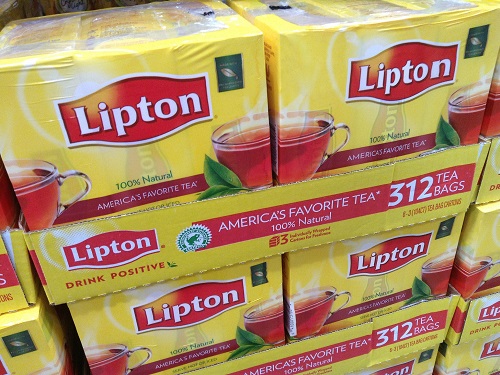- Marketing Mix Strategy ›
- Products ›
- Lipton Marketing Mix (4Ps) & Marketing Strategy
Lipton Marketing Mix (4Ps) & Marketing Strategy
Marketing strategy of Lipton through marketing mix framework which covers the 4Ps (Product, Price, Place, Promotion).
Lipton Product Strategy:
Lipton is one of the most popular tea brands in the world. Being Tea brand, Lipton has the very strong product line in Tea segment only. From green tea to lemon tea, from Ice tea to Lipton yellow label Lipton has expanded the product portfolio in its marketing mix in different segments to serve different needs. The Lipton tea is different with the regional specialty like Lipton has tea from Darjeeling, Sri Lanka, Western Europe, North America and Australia with different flavor and taste of people of the specific people. The brand Lipton serves different types of tea’s in its entire product offering. Lipton has different variety of products as well. Lipton in India has specifically focused on it Tea products rather than other segments. The brand has an exclusive quality of Tea’s in India for unique chai lovers.

Image: flickr.com/photos/jeepersmedia/
This concludes the product strategy in Lipton marketing mix & strategy.
Lipton Price/Pricing Strategy:
Below is the pricing strategy in Lipton marketing mix strategy:
Asia Pacific is the highest consumer of tea in the world. And from Asia, it is India whose consumption is over 20% of it.
As Indian are highly priced sensitive and considering high competition in the market, Lipton follows competitive pricing strategy. Being one of the best brands of Tea in India Lipton has concentrated to Indian market considering the huge potential market. With more value for money, Lipton follows going rate pricing strategy. For Green tea, without considering tough competition, Lipton charges high prices. The main targeted segment of Lipton is Middle class and upper middle class so the pricing strategy is as per the segment.
Read more about Lipton
Lipton Place & Distribution Strategy:
Following is the distribution strategy in the Lipton marketing mix:
Marketing and selling in nearly 100+ countries can be done if you have very strong supply chain model for its distribution. The Lipton plants its tea plants in Tanzania and Kenya with the different variety. India is main targeted country for Tea consumption. The Unilever and PepsiCo is co-owner for Lipton target their current consumer segment via its present marketing strategy. Initially, Lipton has focused over Mumbai for their distribution after that they started expanding. Green Tea was among most sold tea type of Lipton whose footprint was very high especially from Mumbai to Pune; Lipton has more than 500 distributors.
Being PepsiCo product lays have an advantage over its own supply chain and advertisement strategy.
Lipton Promotion & Advertising Strategy:
The promotional and advertising strategy in the Lipton marketing mix is as follows:
Being PepsiCo and Unilever product, Lipton has the extensive marketing strategy. Television advertisement with different taglines and new innovative emotional marketing factor is nowadays common for promotion. TV, online ads, newspapers, other print media channels are among traditional promotional channels for Promotion. Lipton also has high Social media outreach. Social media marketing for more brand visibility on Facebook, Twitter and YouTube with the content marketing of the product in magazines is also one of the strategies. Sponsoring different events has also made Lipton more popular and visible beverage among tea enthusiastic. This completes the marketing mix of Lipton.
About Lipton:
Lipton is a brand of tea, jointly owned by Unilever and PepsiCo. Before ownership to Argyll Foods, Lipton was a supermarket chain in the UK. The tea brand is quite well known worldwide. With this huge potential, there are lots of different TEA brands exist in India.
But there is no global player as such in India proving global taste of tea with global quality assurance hence by grabbing this opportunity, Lipton came into this segment. With consistent performance and quality product, Lipton had shown consistent growth over the years.
This article has been researched & authored by the Content & Research Team which comprises of MBA students, management professionals, and industry experts. It has been reviewed & published by the MBA Skool Team. The content on MBA Skool has been created for educational & academic purpose only.
Browse marketing strategy and 4Ps analysis of more brands similar to Lipton. The Marketing Mix & Strategy section covers 4Ps and 7Ps of more than 800 brands in 2 categories.
Continue Reading:
The names and other brand information used in the Marketing Mix & Strategy section are properties of their respective companies. The companies are not associated with MBA Skool in any way.
What is MBA Skool?About Us
MBA Skool is a Knowledge Resource for Management Students, Aspirants & Professionals.
Business Courses
Quizzes & Skills
Quizzes test your expertise in business and Skill tests evaluate your management traits
Related Content
All Business Sections
Write for Us